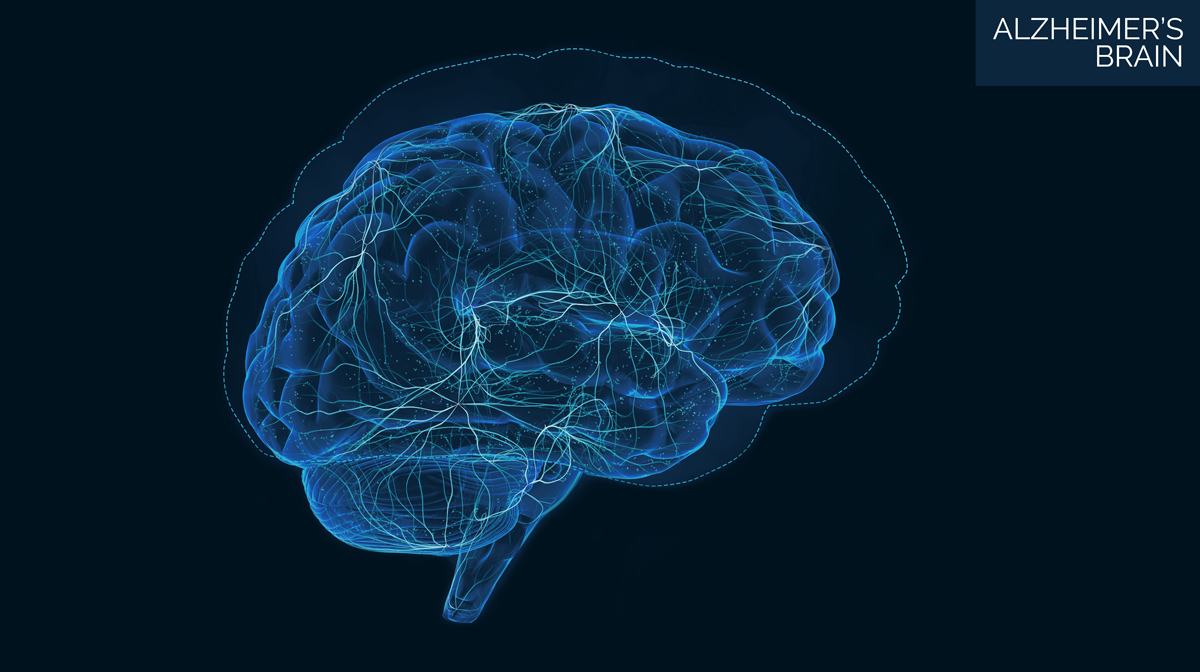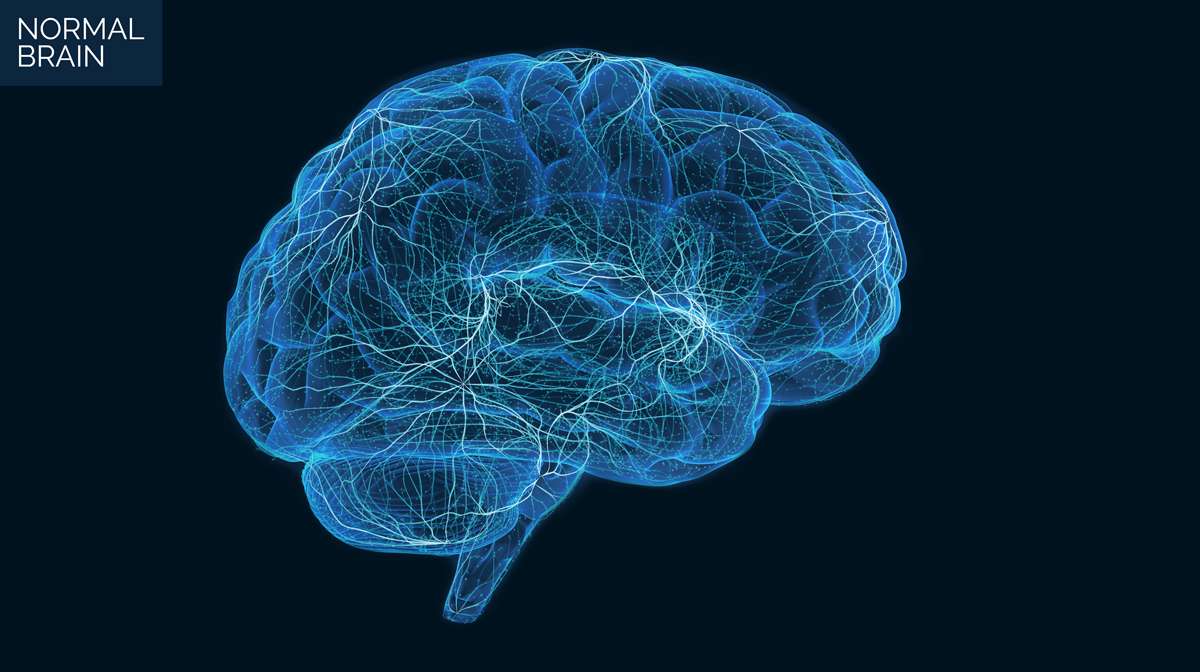What causes Alzheimer's disease?
Healthy brains have many special cells called neurons. Neurons talk to each other to tell the body what to do. Neurons can talk to other cells in the body, like cells in muscles or organs.
In Alzheimer’s disease, neurons stop talking to each other. After a while, they can die. When neurons die, the brain shrinks and stops working.
Your brain is made up of billions of special cells called neurons. Neurons communicate with each other and with other cells in the body, like those in muscles or organs. Neurons are the only cells in the human body that normally live just as long as you do. They cannot be replaced like other cells when they die. In Alzheimer’s disease, neurons stop functioning, lose connections with other neurons, and die. As neurons die and the brain shrinks, the brain can’t function normally. This is why Alzheimer’s disease is not a normal part of aging.
Healthy brains contain tens of billions of specialized cells (neurons) that communicate with one another and with other cells in the body, such as those in muscles or organs. Alzheimer’s disease is a neurodegenerative disease, which means that neurons stop functioning, lose connections with other neurons, and die. As neurons die and the brain shrinks, the brain loses the ability to function normally.
Slide the arrow to the left and right to compare a normal brain and an Alzheimer's brain. For illustration only.
In Alzheimer's disease, neurons change in a specific pattern. At first, neurons responsible for memory start to die. Next, neurons die in other parts of the brain that are needed for language, reasoning, and social behavior. Eventually, the entire brain is affected.
Scientists can predict the pattern of Alzheimer’s. But how fast the pattern happens can be different for every person.
No one knows for sure why Alzheimer’s disease happens. But they do know that there are certain changes that happen in the brain during Alzheimer’s.
There is a pattern to the destruction throughout the brain as Alzheimer’s disease progresses. At first, neurons in areas of the brain that control memory are destroyed. Next, other areas of the brain that control language, reasoning, and social behavior are affected. Eventually, Alzheimer’s disease affects the entire brain.
While the pattern of damage is predictable, how quickly the disease progresses can vary greatly from person to person.
Scientists aren’t exactly sure what causes Alzheimer’s disease or why it develops, but there are specific changes to the brain that occur as the disease progresses.
There is a predictable pattern to the destruction of neurons throughout the brain as Alzheimer’s disease progresses. At first, neurons in areas of the brain responsible for memory are destroyed. Next, other areas of the brain that are involved in language, reasoning, and social behavior are disrupted. Eventually, the entire brain is affected.
While the pattern of damage is predictable, how quickly the disease progresses can vary greatly from person to person.
Scientists aren’t exactly sure what causes Alzheimer’s disease or why it develops, but there are specific changes to the brain that occur as the disease progresses.
References: 1. Causes of Alzheimer's disease: What happens to the brain in Alzheimer's disease? National Institute on Aging. https://www.nia.nih.gov/health/what-happens-brain-alzheimers-disease. Accessed September 21, 2021. 2. Inside the brain: a tour of how the mind works, Part 2: Alzheimer's Effect. Alzheimer's Association. https://www.alz.org/alzheimers-dementia/what-is-alzheimers/brain_tour_part_2. Accessed September 21, 2021. 3.https://www.health.harvard.edu/topics/alzheimers-and-dementia





